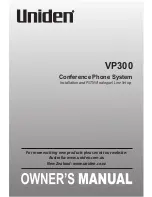
28
ENGLISH
limits include a considerable safety margin, intended to ensure the safety of everyone,
irrespective of their age and health.
The exposure standard for mobile telephones employs a measurement unit called the
Specific Absorption Rate, or SAR. The SAR limit recommended by the Council of the
European Union is 2.0 W/kg.* SAR test were performed under normal usage conditions,
with the telephone transmitting at its highest certified power level on all tested frequency
bands. Although the SAR is established at the maximum certified power level, while the
telephone is in operation, its actual SAR level may be well below the maximum value. The
telephone is indeed designed to operate at different power levels, so as to only use the
power required to reach the network. Generally speaking, the closer you are to the base
station antenna, the lower the power output.
Before a telephone model is made available for sale to the public, its compliance with the
European RTTE Directive must be demonstrated. This directive considers the protection of
the health and safety of the user and of any other person to be an essential requirement.
Compliance with the European R&TTE Directive must be proven before a phone model
can be sold to the public. This directive includes a basic requirement to protect the health
and safety of the user and other people. In tests to prove compliance with the standard, the
highest SAR value of this mobile phone when using directly at the body was 0.863 W/kg;
and ear was 0.657 W/kg.
There may be differences in the SAR levels of different telephones under different
conditions, but they comply with EU requirements for RF exposure.
* The SAR limit for mobile devices used by the public is 2.0 W/kg, averaged over 10 grams
of bodily tissue. The directives include a considerable safety margin in order to ensure
additional protection for the public and to take into account all measurement differences.
SAR values may differ between national information requirements and network bandwidth.
SAR tests have been carried out on this product at 0.5 cm from the body. In order to meet
the requirements related to exposure to radiofrequency energy, this device must be kept at
least at this distance from the body.
Basic precautions can help reduce the level of exposure to radio frequencies. In order to
lower the emission power from your mobile phone, use it when having excellent reception,
the signal strength indicator on top of the screen must show a sufficient number of bars. The
device usually uses less power when close by a base station. Also ensure the accessories
used with your mobile phone (such as casings) do not contain metal compounds.
The current scientific information has not linked mobile phone use with any specific
precautions. However, organizations such as the World Health Organization recommend
people willing to reduce their exposure to radio frequency to limit the length of use of the
device or use hands-free mode as much as possible so it can be kept far from the head or
the body during the use. Under the applicable French law, we are required to inform you
that it is recommended to keep the mobile phone away from pregnant women’s belly and
teenagers’ lower belly.
For more information, refer to World Health Organization website (http://www.who.int/emf).
Bluetooth
The Bluetooth® word mark and logos are registered trademarks owned by Bluetooth SIG,
Inc. and any use of such marks by Lexibook® is under license. Other trademarks and trade
names are those of their respective owners.
© 2017 Bluetooth SIG, Inc.
GSM20seriesIM1187_V53_217.indb 28
5/5/17 3:50 pm
Summary of Contents for GSM20 serie
Page 2: ...2 1 11 5 7 4 3 6 8 10 9 12 13 14 GSM20seriesIM1187_V53_217 indb 2 5 5 17 3 50 pm ...
Page 3: ...15 16 18 17 GSM20seriesIM1187_V53_217 indb 3 5 5 17 3 50 pm ...
Page 103: ...GSM20series GSM20seriesIM1187_V53_217 indb 103 5 5 17 3 50 pm ...
Page 104: ...GSM20seriesIM1187_V53_217 indb 104 5 5 17 3 50 pm ...
















































